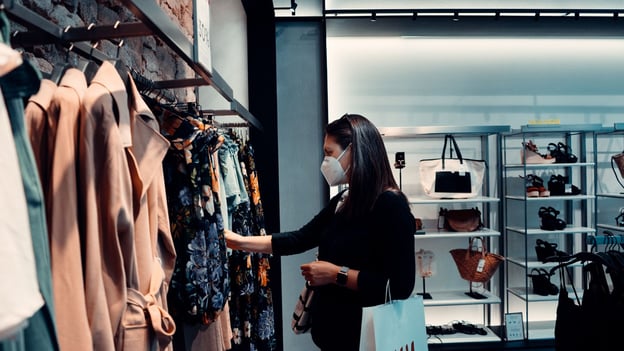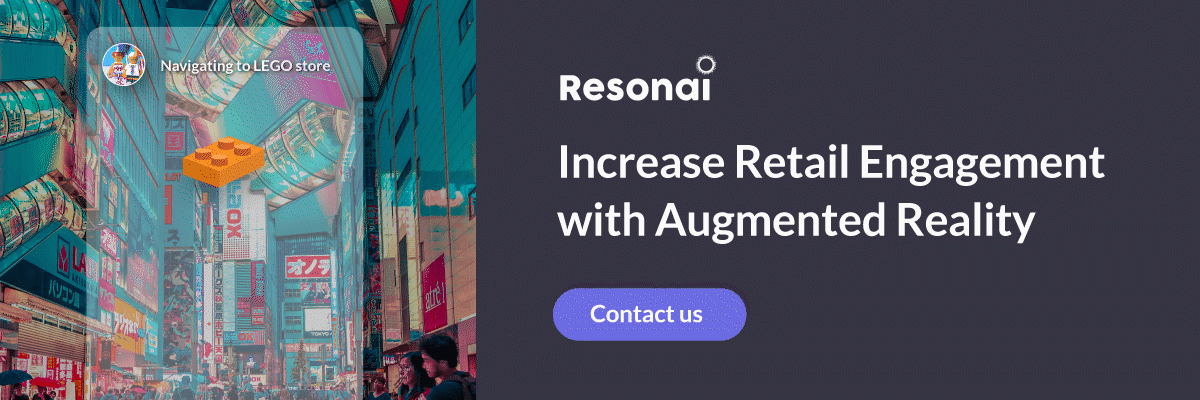5 Considerations for a Small Shopping Center Design
Learn how to boost customer satisfaction and maximize retail profits with thoughtful design and implementation of technology
 Retail has rebounded significantly since the beginning of the COVID-19 pandemic. Occupancy rates and retail store openings are up, and businesses are looking to grow into shopping centers, both big and small. If you are responsible for planning a small shopping center or strip mall, creating a positive customer experience without sacrificing profits is a must. Here are five crucial considerations for your small shopping center design.
Retail has rebounded significantly since the beginning of the COVID-19 pandemic. Occupancy rates and retail store openings are up, and businesses are looking to grow into shopping centers, both big and small. If you are responsible for planning a small shopping center or strip mall, creating a positive customer experience without sacrificing profits is a must. Here are five crucial considerations for your small shopping center design.
Jump to a section…
Keep small shopping center designs simple
Integrate AR and digital signage
Create a healthy mix of retail properties
Expand your knowledge of shopping mall design and best practices with The Planner’s Guide to Mall Design.
Keep small shopping center designs simple
Larger malls and regional shopping centers require complex designs to accommodate the array of stores and accompanying high volume of foot traffic. For smaller shopping centers, it can be tempting to overthink the design and over-complicate the layout. Ultimately, the goal is to provide a seamless experience for customers, so focus on creating a simple, easily navigable design.
L- or U-shaped shopping center designs are an excellent fit for open-air shopping centers and strip malls, as they provide a logical layout, easy-to-spot signage, and accessible parking. For interior shopping centers, a simple dumbbell design provides rows of shops and boutiques with prime spots for larger anchor stores on either end.
It’s critical to imagine what traffic will look like during peak shopping hours. Are there enough entrances and exits to the center? Are there any choke points? Can your center manage large influxes of traffic during busy shopping seasons, such as Black Friday? These are all questions to consider when creating your design. By beginning with a goal of keeping layouts simple and easy to understand, you won’t introduce unforeseen pain points into the finished product.
Integrate AR and digital signage
Augmented reality tools provided through smartphone apps and in-store kiosks have become vital tools for improving the shopping experience and increasing revenue. These tools can be just as helpful for customers visiting smaller shopping centers as for the largest mega-malls.
According to a study performed by NeilsenIQ, 43% of shoppers are interested in using AR tools for in-store guidance and product recommendations. And according to Harvard Business Review, customers that use AR are 19.8% more likely to make a purchase than those who don’t.
Implementing other retail technology like digital signage within a small shopping center floor plan can improve the customer experience by providing better navigation tools, but it can also unlock additional revenue streams through new advertising opportunities. These technologies feature built-in data tracking and analysis capabilities, enabling you to discover how customer traffic moves through your location, which signs and ads are most effective, and other information to help you make informed updates to your retail location. Discover how this new digital infrastructure can deliver more immersive experiences for your shopping center customers by downloading our free ebook.
Be smart about parking
Just because your shopping center is smaller doesn’t mean you should skimp on parking. The amount of space you can dedicate to parking relies on many factors, including the relationship between your leased space and surrounding private and public roadways. The generally accepted parking-to-retail ratio is estimated anywhere between five to ten spaces per 1,000 square feet of commercial space.
Of course, one must also be cautious of how parking spaces are laid out. What appears to be ample space may become a congested mess when submitted to real-world traffic conditions. There is a direct link between parking availability and customer satisfaction, making it one of the most crucial shopping mall design considerations. If customers have a frustrating experience visiting your shopping center, they will be far less likely to return.
Consider the relationship between your shopping center’s entrances and the surrounding parking. Examine how parking lot entrances and exits feed into and out of surrounding roads. Monitor the overall flow of public traffic around your retail space, especially during peak hours, and see how it may exacerbate inherent issues with your design draft.
Create a healthy mix of retail properties
Picking the right retail businesses is a must when you have limited space. Performing an initial survey on surrounding businesses, population demographics, and other customer and location data will help you determine which stores your shopping center should house.
Importantly, you should have at least one or two anchor stores within your center to ensure a steady flow of customers to your retail center. Unfortunately, recent trends have seen an outflux of traditional retail anchors like department stores away from smaller centers as national chains look for ways to cut costs by closing underperforming retail locations. According to Deloitte, there are over 750 anchor vacancies across the United States, primarily in smaller Class B and Class C malls. Look to alternate sectors, like grocery stores, restaurants, entertainment centers, or even healthcare, to fill the gaps these traditional anchors have left behind.
Flesh out the rest of your properties with a mix of conventional and micro-retail offerings. Temporary pop-up stores and smaller boutiques can add a much-needed burst of spontaneity to your retail traffic, encouraging shoppers to check in regularly for new offerings. Their smaller, non-traditional footprint can also fit into spaces that generally go unused.
Make it accessible
Unlike when they venture out to larger malls that encourage exploration, many visitors to your shopping center will likely only need to stop by a single store. Making it easy for customers to arrive, get what they need, and get out quickly will be crucial for providing a quality shopping experience.
Ensuring that your location remains accessible to people with disabilities will also go a long way to providing a more comfortable and welcoming experience for all of your guests. Include ramps, elevators, automatic door openers, and other fixtures as state and federal regulations dictate.
Some shoppers will look for an excuse to linger after finishing their primary task, so provide opportunities for relaxation. Amenities like vending machines, restrooms, benches, plants, fountains, and other decorations create a welcoming environment, encouraging visitors to pop into different stores.
Knowing where to place these amenities in a way that optimizes the customer experience and maximizes revenue requires capturing and understanding live data — and tools like augmented reality can help. AR apps, digital signage, and digital twins all provide critical insight into the ways shoppers move and interact with your retail space, revealing the results of successful decisions and surfacing pain points to address. Download our free ebook to learn how digital infrastructure can help you get the most out of your small shopping center designs. Or get in touch with Resonai today and set up a free demonstration.
Subscribe to Our Newsletter!
Read More
The Big List of Shopping Mall Design Standards & Guidelines to Know
Despite the many trend pieces announcing its imminent decline, Americans are not done with the...
9 Small Retail Store Layout Tips, Tricks, and Examples for 2022
In 2008, Usain Bolt set the record for the 100m dash with a blistering time of 9.69 seconds. While...
Previewing the Mall of the Future
Reports of the mall’s death have been greatly exaggerated. Online shopping may be de rigueur today,...

